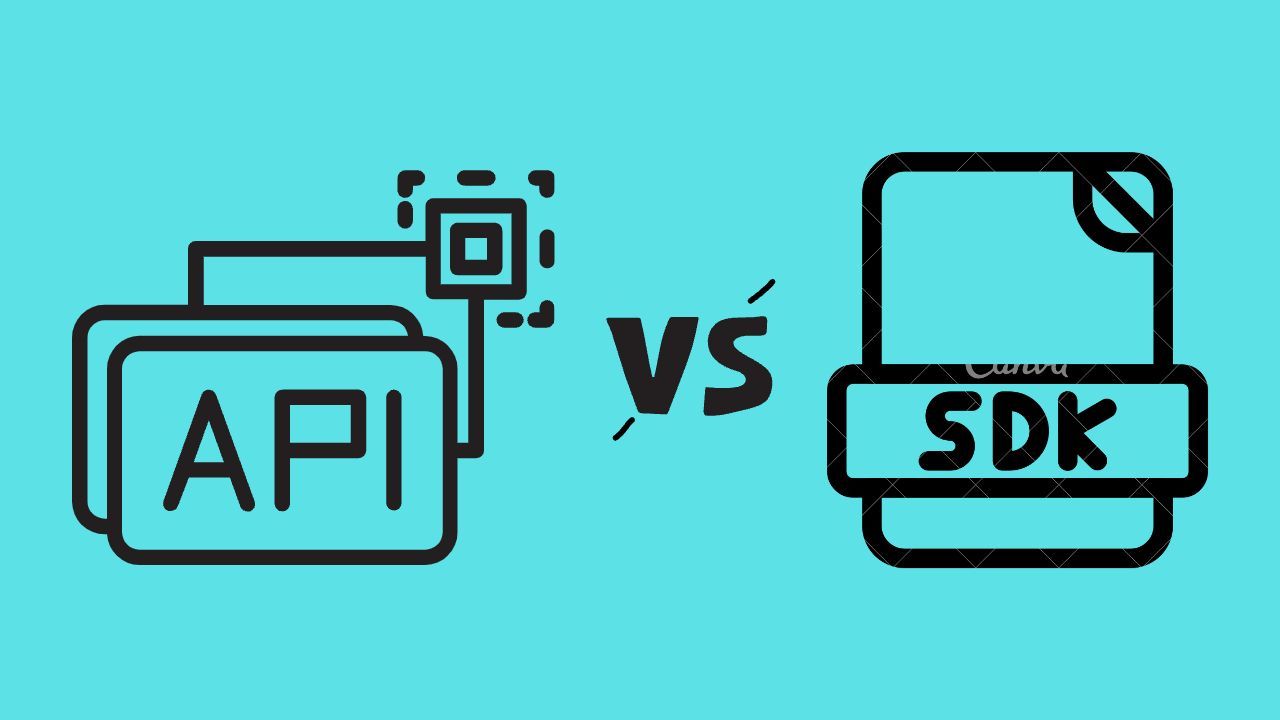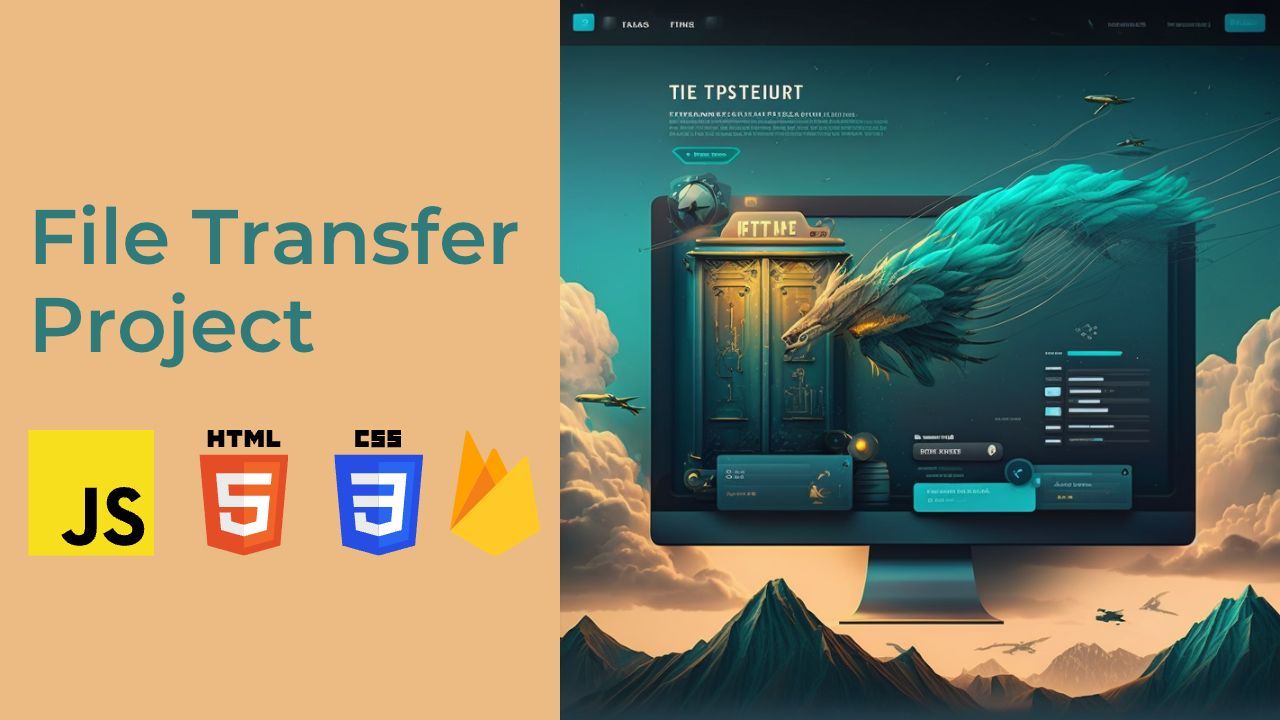Firebase vs Custom Backend: Which is Right for You?
Firebase and custom backends, including their key features, pros, and cons, and to help developers to determine which option is the best fit for their specific needs.

What is Backend?
A backend refers to the server-side of a web application that handles data storage, logic, and management of the application. It is the part of the application that runs on the server and is not visible to the end user.
Another example could be an e-commerce website. The frontend of the application may display products, categories, and allow users to place orders. The backend, on the other hand, is responsible for storing product information, managing inventory, processing payment transactions, and ensuring that the frontend is able to display accurate and up-to-date information to users.
What is the role of Backend vs Frontend?
The frontend and backend of a web application serve different purposes and play different roles in the overall functionality of the application.
The frontend, also known as the client-side, is responsible for presenting information and data to the user.
The backend, also known as the server-side, is responsible for managing the data and logic of the application. This includes storing and retrieving data, processing user interactions, and providing the necessary data to the frontend for display.
This article aims to provide readers with a comprehensive understanding of Firebase and custom backends, including their key features, pros, and cons, and to help readers determine which option is the best fit for their specific needs.
I. Introduction
Firebase vs Custom Backend Overview
- Firebase is a cloud-based, backend-as-a-service platform that provides real-time data storage and retrieval and authentication and hosting services for mobile and web applications.
- A custom backend, on the other hand, is a backend that is developed from scratch specifically for a specific application or platform, tailored to the specific needs and requirements of that application.
- Firebase offers ease of use, real-time updates, scalability, and cost-effectiveness, but has limited customization options, privacy concerns, and dependence on Google.
- Custom backends offer full control and customization, greater privacy, and more robust security features, but have increased complexity, higher development costs, and ongoing maintenance requirements.

II. Understanding Firebase
A. What is Firebase and how does it work?
- Firebase is a cloud-based platform that provides real-time data storage and retrieval and authentication and hosting services for mobile and web applications. It is designed to make it easier for developers to create and manage the backend of their applications, without the need for specialized knowledge or skills in server-side programming.

B. Key features of Firebase
- Real-time data storage and retrieval
- Authentication services, including email and password, social media, and OAuth authentication
- Hosting services for web applications
- Easy integration with other Google services, such as Google Analytics and Google AdWords
- Scalability, allowing applications to grow and scale without the need for additional backend infrastructure
C. Pros of using Firebase
- Firebase is user-friendly and easy to use, making it a popular choice for developers, especially for small to medium-sized projects
- Real-time data storage and retrieval allows for seamless and instant updates to the application and its users
- Firebase is designed for scalability, allowing applications to grow and scale without the need for additional backend infrastructure
- Firebase is cost-effective, with a free tier that includes basic features, as well as affordable pricing plans for more advanced features and usage levels
D. Cons of using Firebase
- Firebase has limited customization options, making it more suitable for simple applications and projects that don't require complex backend infrastructure
- Privacy concerns arise due to the dependence on Google and the storage of data on Google's servers
- Dependence on Google can result in issues with reliability and accessibility, especially in regions where Google services may be restricted or blocked

III. Understanding Custom Backend
A. What is a custom backend and how does it work?
- A custom backend is a backend that is developed from scratch specifically for a specific application or platform, tailored to the specific needs and requirements of that application. It is designed to provide complete control and customization over the backend infrastructure, allowing developers to create a backend that is optimized for their specific needs.
B. Key features of custom backend
- Complete control and customization over backend infrastructure
- Greater privacy and control over data storage and retrieval
- More robust security features, including custom encryption and data protection
- The ability to use any programming language or technology to build the backend, giving developers the flexibility to choose the best tools for their specific needs
- The ability to integrate with any third-party services or APIs as needed
C. Pros of using a custom backend
- Custom backends offer full control and customization over the backend infrastructure, allowing developers to create a backend that is optimized for their specific needs
- With a custom backend, there is greater privacy and control over data storage and retrieval, as the data is stored on servers owned and managed by the developer
- Custom backends can offer more robust security features, including custom encryption and data protection, to ensure the protection of sensitive data and user information
D. Cons of using a custom backend
Custom backends can be more complex and challenging to develop than using a backend-as-a-service platform like Firebase, requiring specialized knowledge and skills in server-side programming
- The development costs for a custom backend can be higher than using a backend-as-a-service platform, as the development process requires more time, resources, and expertise
- Ongoing maintenance and updates to the backend infrastructure are required to keep the backend running smoothly, adding to the overall cost and effort required to maintain the backend
E. Additional important topics on custom backend
Here are some additional important topics to consider when discussing custom backends:
- Scalability: Custom backends offer more flexibility when it comes to scalability, allowing for a more tailored solution to meet the growing needs of your application.
- Integration: Custom backends can be integrated with a wide range of technologies and services, making it easier to extend the functionality of your application and provide a better user experience.
- Custom APIs: Custom backends allow for the creation of custom APIs, enabling you to have full control over the data and functionality of your application.
- Performance: Custom backends can be optimized for performance, providing a faster and more responsive user experience.
- Security: Custom backends can be designed with security in mind, offering robust security features to protect sensitive user data and transactions.

IV. Choosing the Right Option
A. Factors to consider when choosing
- App size and complexity: the size and complexity of the application can influence the choice between Firebase and a custom backend. For small to medium-sized projects, Firebase may be a good choice, while larger and more complex projects may require a custom backend.
- Security and privacy: the level of security and privacy required for the application can also play a role in the choice between Firebase and a custom backend. Custom backends offer greater privacy and security, but can also be more complex to develop and maintain.
- Development resources: the resources available for development, including time, expertise, and budget, can also influence the choice between Firebase and a custom backend. Firebase is generally easier to use and more cost-effective, but custom backends offer more control and customization.
- Budget: budget is an important factor to consider when choosing between Firebase and a custom backend. Custom backends can be more expensive to develop and maintain, while Firebase offers more cost-effective options for small to medium-sized projects.
B. Considerations
- When considering app size and complexity, consider the size and complexity of the application and whether a backend-as-a-service platform like Firebase will provide enough functionality, or whether a custom backend is required to meet the specific needs of the application.
- When considering security and privacy, think about the level of security and privacy required for the application and whether a backend-as-a-service platform like Firebase will provide enough security and privacy, or whether a custom backend is required to meet the specific needs of the application.
- When considering development resources, think about the resources available for development, including time, expertise, and budget, and whether a backend-as-a-service platform like Firebase will provide a more cost-effective and easier solution, or whether a custom backend is required to meet the specific needs of the application.
- When considering budget, think about the cost of developing and maintaining the backend infrastructure and whether a backend-as-a-service platform like Firebase will provide a more cost-effective solution, or whether a custom backend is required to meet the specific needs of the application.
C. Best practices for determining the right solution for your needs
- Conduct thorough research and analysis of both Firebase and custom backends to determine which option is best suited for your specific needs
- Consult with experts and other developers to get their opinions and insights
- Consider testing both Firebase and a custom backend to determine which provides the best results for your specific needs
- Regularly review and assess your backend solution to ensure that it continues to meet the needs of your application as it evolves and grows.
D. Examples of projects that may benefit from a custom backend
- E-commerce platforms: Custom backends can provide the scalability, performance, and security necessary to support a large and complex e-commerce platform.
- Social networks: Custom backends can provide the control and customization necessary to meet the unique requirements of social network applications.
- Gaming platforms: Custom backends can provide the performance, scalability, and security necessary to support large and complex gaming platforms.
- Healthcare platforms: Custom backends can provide the security, privacy, and integration necessary to support healthcare applications that handle sensitive patient data.
- Educational platforms: Custom backends can provide the performance, scalability, and integration necessary to support large and complex educational platforms.
V. What should you Choose & Why?
The choice between Firebase and custom backend ultimately depends on the specific needs and requirements of your application. Here are some general guidelines to help you make a decision:
- If you are developing a small or simple application, Firebase may be a good option due to its ease of use and cost-effectiveness.
- If you have limited development resources, Firebase may also be a good option due to its pre-built functionality and lower development costs.
- If you need more control and customization over the functionality and data of your application, a custom backend may be a better choice.
- If security and privacy are a top concern, a custom backend may offer more robust security features and greater control over user data.
- If scalability is a major concern, a custom backend may offer more flexibility and scalability options to meet the growing needs of your application.
Ultimately, the decision between Firebase and custom backend will depend on your specific needs and requirements. It is important to carefully consider your budget, development resources, security, and privacy requirements, and scalability needs when making a decision.
VI. Conclusion
A. Recap of the pros and cons of each option
- Firebase offers ease of use, real-time updates, scalability, and cost-effectiveness, but has limited customization options and privacy concerns.
- Custom backends offer full control and customization, greater privacy, and more robust security features, but also have increased complexity, higher development costs, and ongoing maintenance requirements.

B. Final thoughts on making the right decision for your specific needs
- The decision between Firebase and a custom backend will depend on the specific needs of your application and the resources available for development.
- Firebase and custom backends have their strengths and weaknesses, and the right solution for you will depend on the size and complexity of your application, the level of security and privacy required, the development resources available, and your budget.
C. Encouragement to reach out for additional assistance if needed
- If you are unsure of which solution is best for your specific needs, don't hesitate to reach out to experts and other developers for assistance.
- There are many resources available to help you make the right decision for your specific needs, including online forums, blogs, and other resources.
VII. References
A. List of resources used in the article





B. Additional resources for further reading and research





In conclusion, both Firebase and custom backends have their advantages and disadvantages, and the right solution for you will depend on the specific needs of your application. Careful consideration and analysis of your specific needs, along with the resources available for development, will help you make the right decision for your project.
FAQs
What is Firebase?
Firebase is a cloud-based backend platform developed by Google, which provides developers with a range of tools and services to help them build and deploy scalable web and mobile apps quickly and easily.
What is custom backend?
Custom backend refers to a backend that is built from scratch by a developer. This is a more advanced solution, which offers greater flexibility and control compared to Firebase.
What are the pros of using Firebase?
Firebase is easy to use, cost-effective, and highly scalable. However, it has limited customization options and performance limitations.
What are the pros of using custom backend?
Custom backend offers greater flexibility, better performance, and complete control over the backend. However, it can be more expensive and complex compared to Firebase.
Which option is best for my project?
The best option for your project depends on a number of factors, including the size and complexity of the project, the budget, and your specific needs and requirements. Consider consulting with a professional developer to determine which solution is best for your project.
Reference headlines for this post:
- Firebase: The Convenient Backend Solution for Your App
- Custom Backends: Building Your Own Unique Solution
- Firebase vs Custom Backend: Which is Right for You?
- Firebase Real-Time Database: The Key to Building Real-Time Apps
- Firebase Authentication: Secure User Management for Your App
- Custom Backends: The Key to Scalable Solutions
- Custom Backends: Gain Full Control of Your App's Backend
- Firebase: Understanding Its Limitations for Your App
- Custom Backend Development: Overcoming the Challenges
- Firebase Pricing: Understanding the Costs for Your App
- Custom Backend Cost: Building Your Own Solution











